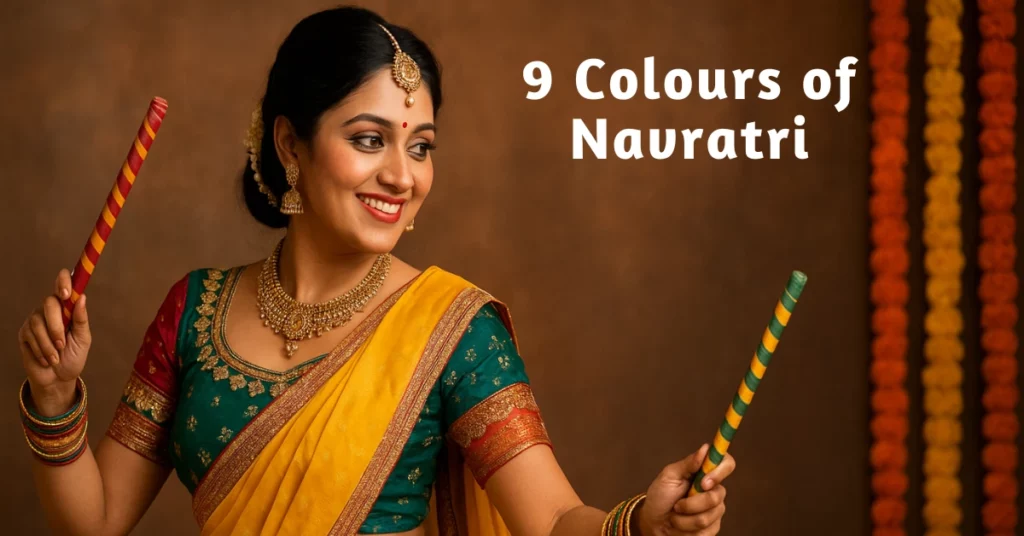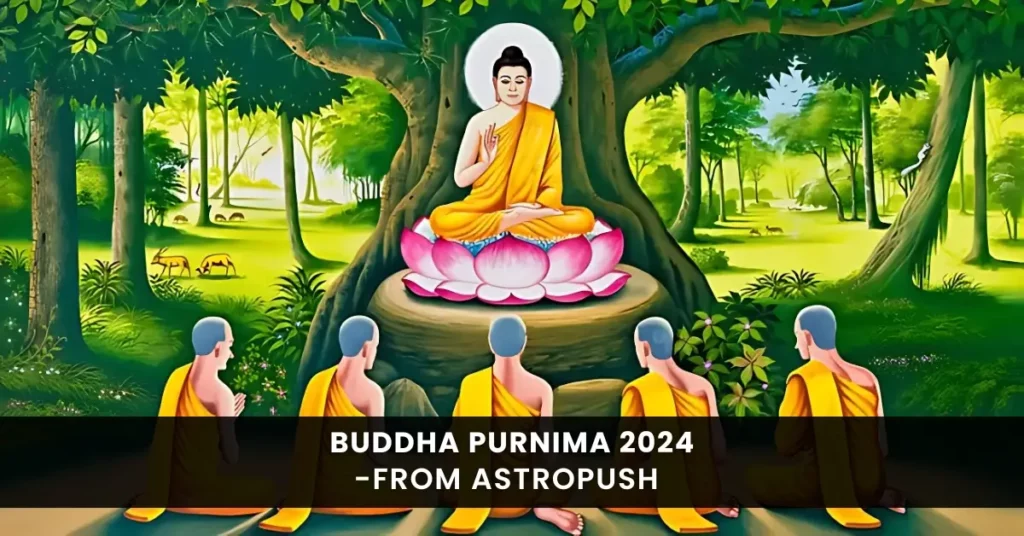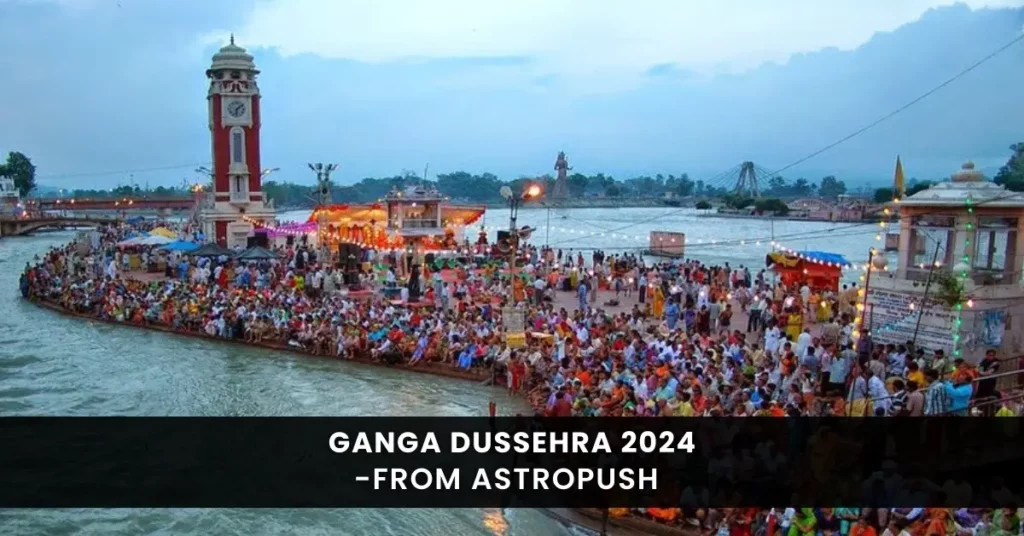Navratri is one of the most celebrated festivals in India, marked with devotion, joy, and vibrant traditions. Among its many rituals and practices, the 9 colours of Navratri hold a special place. Each day of this nine-day festival is associated with a specific colour, which is believed to enhance spiritual energy, attract positivity, and honor the goddess being worshipped that day. Understanding these colours can help devotees not only celebrate Navratri with more enthusiasm but also connect more deeply with its spiritual essence.
At AstroPush, we provide services like chat with astrologer online free, talk to astrologer online free, free kundli, free horoscope prediction, kundli matching, numerology, and panchang calendar to guide you in aligning with these energies. You can contact the best astrologer in India anytime through our application for personalized advice during Navratri or any other auspicious occasion.
The Importance of Colours in Navratri
Colours symbolize important aspects of Indian festivals, and Navratri is no exception. Each of the 9 colours of Navratri represents different aspects of life, emotions, and spiritual growth. Devotees wear the designated colour each day to invoke blessings from Goddess Durga and her various forms. Beyond their aesthetic beauty, these colours influence our mood, energy, and focus during the festival.
For devotees, following the colour tradition is also a way of showing respect and devotion. It unites communities, inspires creativity in decoration, and brings harmony among participants. Many families and social groups organize themed events where participants wear the specific colours of the day, creating a festive and vibrant atmosphere.
Day 1: Grey – Shailaputri
The first day of Navratri is dedicated to Goddess Shailaputri, symbolizing the power of the mountains. The colour grey represents balance, neutrality, and the calm strength of the goddess. Wearing grey is believed to help devotees stay composed, focused, and connected to the earth’s energy. Grey also encourages clarity in thoughts and stabilizes emotional disturbances, helping one start the festival with a grounded mind.
Day 2: Orange – Brahmacharini
On the second day, devotees worship Goddess Brahmacharini, the symbol of penance, discipline, and devotion. The colour orange is associated with energy, enthusiasm, and warmth. Wearing orange is believed to enhance spiritual growth and vitality. It inspires courage, self-discipline, and a positive outlook. Many people wear orange attire while performing rituals or participating in dances like Garba and Dandiya, embracing the lively and motivating energy of the day.
Day 3: White – Chandraghanta
Goddess Chandraghanta, celebrated on the third day of Navratri, symbolizes peace and bravery. The colour white represents purity, peace, and spiritual awakening. Wearing white is believed to help devotees cultivate inner peace and clarity. It encourages mindfulness and calmness during prayers, allowing devotees to focus on devotion and spiritual reflection. White also brings a serene balance to the energetic celebrations of Navratri.
Day 4: Red – Kushmanda
Devotees dedicate the fourth day to Goddess Kushmanda, the creator of the universe. The colour red symbolizes power, passion, and energy. Wearing red energizes the body and mind, increases confidence, and attracts positive energy. Red also represents the strength and vitality of Goddess Kushmanda, reminding devotees of their own power to create and nurture life. Wearing vibrant red attire adds excitement to Navratri celebrations and makes rituals more dynamic.
Day 5: Blue – Skandamata
On the fifth day, Goddess Skandamata is worshipped, who is the mother of Lord Skanda (Kartikeya). The colour blue signifies calmness, wisdom, and depth. Wearing blue is believed to enhance patience, stability, and spiritual insight. It helps devotees remain composed and balanced while performing rituals. Blue also symbolizes divine protection and encourages a thoughtful approach to devotion, reflecting the nurturing aspect of the goddess.
Day 6: Yellow – Katyayani
Devotees devote the sixth day to Goddess Katyayani, who is known for her courage and victory over evil. The colour yellow represents happiness, positivity, and clarity. Wearing yellow uplifts the mood, brings optimism, and encourages intellectual growth. It symbolizes wisdom and prosperity while keeping negative energy away. Yellow also represents the sun, signifying hope, joy, and new beginnings during the festive season.
Day 7: Green – Kalaratri
Devotees worship Goddess Kalaratri, who is fierce and powerful, on the seventh day. The colour green represents growth, renewal, and harmony. Wearing green balances emotional energy and promotes health and prosperity. It symbolizes rejuvenation and life’s nurturing aspects. Wearing green attire during Navratri brings a sense of freshness, calmness, and connection to nature, complementing the goddess’s protective and transformative energy.
Day 8: Peacock Green – Mahagauri
The eighth day honors Goddess Mahagauri, who symbolizes purity, serenity, and devotion. The colour peacock green (a blend of blue and green shades) represents balance, elegance, and spiritual purity. Wearing this colour is believed to enhance mental clarity, emotional stability, and spiritual awareness. It inspires devotion, calmness, and harmony in thoughts and actions. Mahagauri’s energy encourages devotees to maintain a pure heart and focus on positive energies.
Day 9: Purple – Siddhidatri
The final day of Navratri is dedicated to Goddess Siddhidatri, who grants supernatural powers and fulfills desires. The colour purple symbolizes luxury, power, and wisdom. Wearing purple is believed to enhance spiritual growth, intuition, and creativity. It is also associated with ambition, strength, and devotion. Purple attire marks the culmination of Navratri celebrations and reflects the divine energy that empowers devotees to achieve success and prosperity in life.
Also Read – 3rd Day of Navratri: Significance, Rituals, and Spiritual Importance
Celebrating Navratri with the 9 Colours
Following the tradition of the 9 colours of Navratri brings a deeper connection to the festival’s spiritual essence. Many families and social communities actively participate in themed events, where every day is celebrated with the corresponding colour. Decorations, flowers, and attire are all coordinated according to these colours, making Navratri a visually stunning and spiritually fulfilling festival.
For those who want personalized guidance on how to make the most of Navratri, AstroPush offers expert astrology services. You can chat with astrologer online free, get a free kundli, talk to astrologer online free, or check free horoscope predictions. Our experts also provide kundli matching, numerology, and panchang calendar services to ensure your festival days are aligned with the most auspicious timings.
Spiritual Significance of Navratri Colours
The 9 colours of Navratri are not just for decoration—they are deeply symbolic. Each colour represents different energies that help devotees cultivate physical, emotional, and spiritual balance. For example:
-
Grey (Day 1) stabilizes emotions and promotes grounded energy.
-
Orange (Day 2) boosts vitality and enthusiasm.
-
White (Day 3) fosters peace and purity.
-
Red (Day 4) symbolizes power and passion.
-
Blue (Day 5) encourages wisdom and calmness.
-
Yellow (Day 6) brings optimism and clarity.
-
Green (Day 7) enhances growth and harmony.
-
Peacock Green (Day 8) promotes balance and devotion.
-
Purple (Day 9) inspires spiritual wisdom and power.
By wearing or surrounding oneself with these colours, devotees can experience positive energy and spiritual upliftment throughout Navratri.
Also Read – Shani Chalisa: Meaning, Benefits, and Importance in Daily Life
Modern Ways to Follow the Tradition
Even in today’s fast-paced world, the tradition of observing the 9 colours of Navratri continues to thrive. Many people wear coloured attire while attending Garba events or participating in online virtual celebrations. Home décor can also be coordinated with the day’s colour to create an immersive spiritual environment.
With technology, you can also consult astrologers online to know the best ways to follow these traditions. AstroPush allows you to talk to astrologer online free and access free kundli and panchang calendar services. You can also explore numerology and horoscope predictions to align your actions with positive energies during Navratri.
Conclusion
The 9 colours of Navratri are more than just a tradition—they are a way to connect deeply with divine energy, foster positivity, and celebrate life’s vibrant aspects. Each day, with its unique colour, brings new spiritual lessons and opportunities for devotion. Following this colourful tradition adds joy, harmony, and purpose to the festival.
Whether it’s wearing the colours, decorating homes, or participating in rituals, understanding the significance of each shade enriches the Navratri experience. AstroPush is here to guide you with expert astrology services, helping you make the most of these auspicious days. You can:
- Chat with astrologer online free
- Talk to astrologer online free
- Free kundli generation
- Free horoscope prediction
- Kundli matching
- Numerology
- Panchang calendar
Celebrate Navratri with devotion, joy, and the 9 colours of Navratri, and embrace the divine energy that each day brings. Connect with AstroPush to receive guidance from the best astrologers in India and make your festival celebration truly auspicious.
Download the application on PlayStore and AppStore now!





